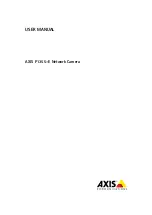
6
Chapter 2 - Getting to Know the Internet Security Router
ASUS SL1200
•
Dynamic NAT:
It dynamically maps an internal host address to a
globally valid Internet address (m-ton). The map usually contains a
pool of internal IP addresses (m) and a pool of globally valid Internet
IP addresses (n) with
m
usually greater than
n
. Each internal IP
address is mapped to one external IP address on a first come first
serve basis.
•
Network Address and Port Translation (NAPT):
It is also called IP
Masquerading. It maps many internal hosts to only one globally valid
Internet address. The map usually contains a pool of network ports
to be used for translation. Every packet is translated with the globally
valid Internet address. The port number is translated with a free pool
from the pool of network ports.
•
Reverse Static:
It is inbound mapping that maps a globally valid
Internet address to an internal host address. All packets coming to
that external address are relayed to the internal address. This is
useful when hosting services in an internal machine.
•
Reverse NAPT:
It is also called inbound mapping, port mapping,
and virtual server. Any packet coming to the router can be relayed to
the internal host based on the protocol, port number or IP Address
specified in the rule. This is useful when multiple services are hosted
on different internal machines.
For a complete listing of all NAT ALGs supported, refer to
Chapter 12: ALG Configuration
.
2.4.1.1 Access Control List (ACL)
A firewall monitors each individual packet, decodes the header information
of inbound and outbound traffic. It then either blocks the packet from
passing or allows it to pass based on the contents of the source address,
destination address, source port, destination port, protocol and other
criterion such as application filter, and time ranges as defined in the
Access Control List (ACL) rules.
ACL is a very appropriate measure for providing isolation of one subnet
from another. It can be used as the first line of defense in the network to
block inbound packets of specific types from ever reaching the protected
network.
The router's firewall’s ACL methodology supports:
• Filtering based on destination and source IP address, port number
and protocol
















































